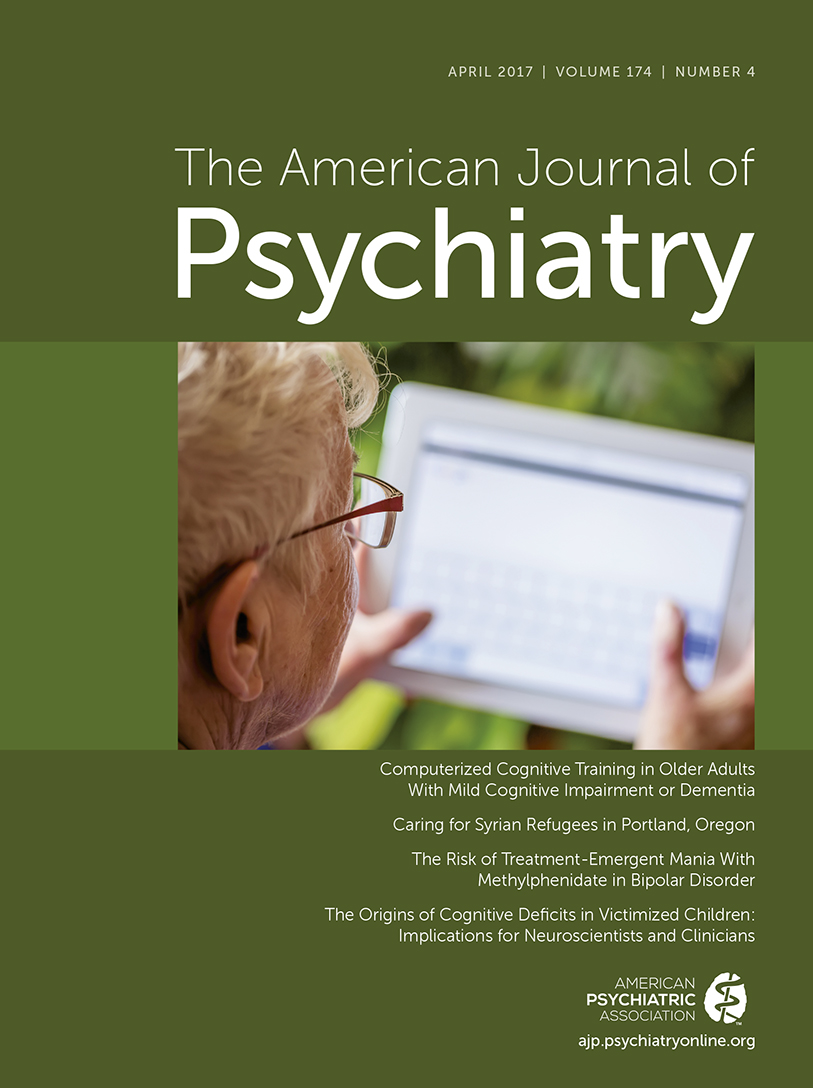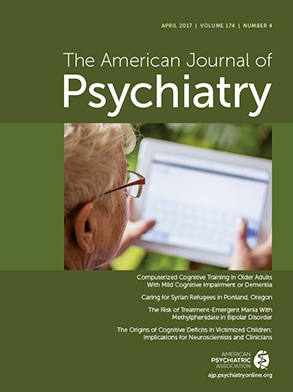T
o the E
ditor: Bostwick et al. (
1), in the November 2016 issue of the
Journal, discussed the need to develop better suicide prevention strategies, and the former director of the National Institute of Mental Health, Thomas Insel, M.D., emphasized that, in contrast to medical advancements that have reduced the prevalence of infectious diseases, significant progress in reducing suicide rates has been elusive (
2).
Other relevant studies underscore potential strategies for reducing suicide risk. One such study found that offspring of depressed parents at increased risk for major depression, who rated spirituality or religion as important to them, had increased resilience and a 90% decreased risk particularly for recurrence of major depression (associated with a thicker cortex and measures of increased white matter connectivity in the brain) over a 30-year period (
3). Also, among women 30–55 years of age who participated in the Nurses’ Health Study, attendance at religious services once per week or more was associated with an incident suicide risk that was 84% lower than the risk for women who never attended religious services (
4). In patients at high risk for suicide in the immediate aftermath of hospitalization, suicide risk can be reduced significantly by merely sending a postcard, as reported by Motto and Bostrom (
5) and affirmed by the former director of the American Foundation for Suicide Prevention, Paula Clayton, M.D.
Psychiatrists evolved from priests or shamans (surgeons from barbers), as Jerome Frank delineated in
Persuasion and Healing (previous required reading for psychiatric residents). Harold Koenig, M.D., and others have written on the importance of obtaining a spiritual history as part of the overall psychiatric evaluation (
6). The former Archbishop of Canterbury, George Carey, calling for closer links between psychiatrists and clergy in the interests of both, and more importantly, in the interest of many patients, cites Andrew Sims’ remarks: “For too long psychiatry has avoided the spiritual realm, perhaps out of ignorance, for fear of trampling on patients’ sensibilities. This is understandable, but psychiatrists have neglected it at their patients’ peril. We need to evaluate the religious and spiritual experience of our patients in etiology, diagnosis, prognosis, and treatment” (
7). In my interviews in the intensive care unit with patients who have made life-threatening suicide attempts despite the absence of identifiable risk factors (e.g., previous suicide attempts, personal or family history of depression, substance use, loss), adolescents often report they have no “meaning or purpose in life.”
To reduce suicide risks, it behooves psychiatrists to practice a bio-psycho-social-spiritual approach to diagnosis and treatment, as suggested initially by the internist George Engel, M.D.
Acknowledgments
The author thanks the Reverend Canon Richard Lief for his inspiration and L. Fernando Martinez, B.A., for his assistance with the references.

